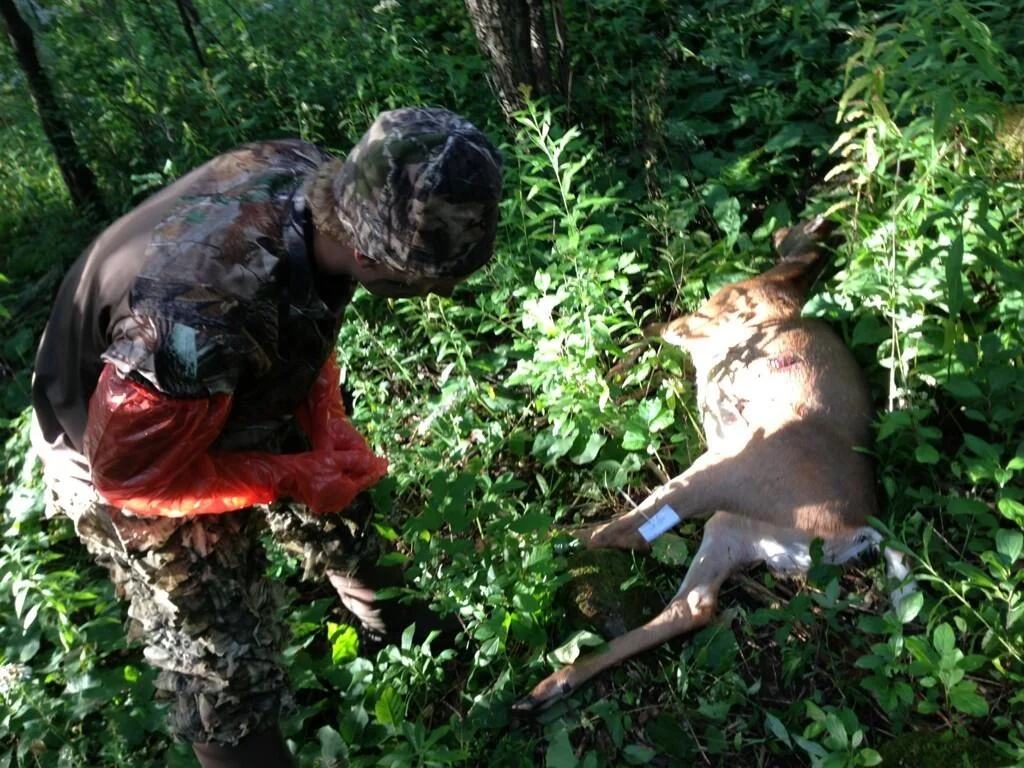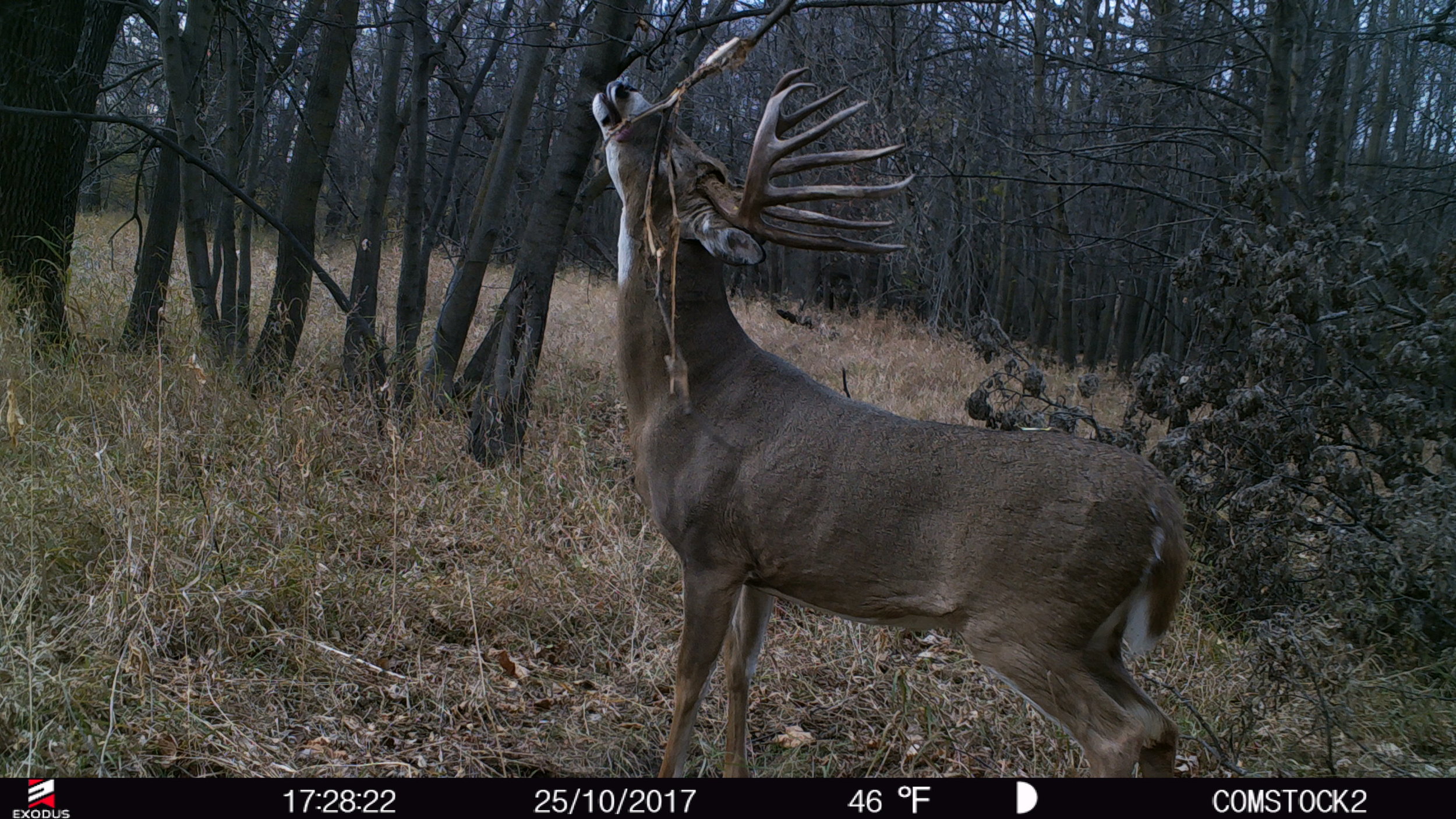By Alex Comstock
The following story you are about to read was written four years ago, by the 19 year old version of myself. This was a story I wrote but never did anything with, and I wanted to share it with you today. It details the hunt for a doe in 2014, and some of the lessons I had to endure while learning when to pass deer. It's an important lesson, and that's why I wanted to share it with you today. Releasing an arrow at a deer should never be taken lightly and is a big decision every time you make it. Sometimes the best decision to make, is to not take the shot at all...
Minnesota...2014
The green forest had just been lit up by the early morning sunrise. I was in a treestand not more than twenty feet in the air on opening day of the 2014 archery season. Bowhunters crave this feeling. Adrenaline is pulsing through the veins as the day is finally here. The long awaited first day of the season can bring so many surprises. The off-season is full of preparation for this day. There is the itch to shoot something besides that target in the yard for countless hours all summer, and yet this is the most vulnerable time to make a poor shot on a deer. It takes a separate skill all in itself to know when and when not to let an arrow fly at an animal. Sometimes it may be the hardest decision to make, but letting a deer walk can be the most ethical action to take.
To say that I had first day butterflies on this particular day would have been a drastic understatement. I was coming fresh off my best season to date, harvesting my biggest buck with a bow the year before, and not to mention my off-season was a slightly shortened one due to being at training for the Air Force. The butterflies in your stomach aren’t a negative, but knowing how to control them is a must. As I finished taking in the scenery, my eyes darted to the right when I caught movement to the west and my focus shifted to the patch of brown I saw coming my way. After quickly lifting up my binoculars and seeing there was a small six pointer and a doe meandering straight towards my shooting lane, I knew I wanted to harvest the doe. Everything was falling into place, until at the last minute, the deer decided to make a change of course. They looped around to my right, and I had to stand up in my stand and get completely turned around in order to attempt a shot. The instant I stood up, the doe locked on to me. I froze halfway standing for what seemed like an eternity. She finally, but hesitantly took her eyes off of me and I immediately finished turning around and drew back my bow. She caught me once again and this time she looked poised to bolt. I was drawn back, but the only issue was that she was quartering to me significantly. This is where, as a bowhunter, knowing when and when not to shoot is vital and this was not a good shot opportunity for me. The doe was clearly on to me and looked ready to flee at any moment, yet I touched off the release anyways. The combination of the bad angle and the doe jumping the string lead to a poor shot. My arrow struck the deer high and back, and the only hope I had was if I clipped a lung or the liver. I knew from the moment I had fired the arrow that I shouldn't have taken the shot. The feeling in my stomach was gut wrenching, and I vowed to not let this happen again.
As a bowhunter we all know our limits, and the types of shots we should be able to make. We should know if we can thread the needle or not, or if the shot is simply too tall of a task. Some events are completely out of our control. For instance, even some of the most relaxed deer will tend to jump the string. There is always the question of whether or not to aim lower, but that is a separate topic in itself. What we can’t let get in the way is our confidence. This was one of the biggest reasons I attempted to harvest this particular doe. I am a very confident shot with my bow. I can shoot tight groups out to fifty or sixty yards with ease. Being a dead eye while shooting at a target doesn’t automatically mean I can make every shot in the deer woods though. This deer was only a mere seventeen or eighteen yards away, and it was a much more difficult shot than a broadside forty yard shot. I had to stand awkwardly in the stand, not to mention there were multiple branches I had to be wary of. To top it off, she was staring directly at me, while quartering to me at a hard angle. There is a difference in being confident with the equipment you have and knowing when to let the deer walk away unharmed.
After the poorly executed shot, I gathered my belongings and headed home for a bit to let the scenario play out in my head a few times (at this point in my life, I wasn't filming, so there was no footage to watch). I knew the way the arrow went in, my only hope was if I clipped a lung, but even that might not be a fatal shot. Once I had reinforcements, we headed in to blood trail the doe. Blood was few and far between and we tracked the deer for hours. There were multiple beds with a hefty amount of blood, but eventually we ran out of blood to follow. The feeling in my stomach made me sick. The next day we did a grid search of the area but the deer never turned up. I was so disgusted at myself knowing that my overconfidence led to the wounding of a deer. The following day I went to my longtime hunting friend, and he told me something that stuck in my head. He asked me if I had a solid, clear shot at the deer. I said I didn’t and then he asked me why I chose to take the shot then. I didn’t have an answer for him. He told me there would be more opportunities to harvest a doe throughout the season and to be patient. That didn’t mean to shoot the next deer I saw, but if I had a good shot then don’t be afraid to take it. I was determined that the next deer I shot I would wait patiently, and execute everything perfectly.
Making a poor shot on a deer because of an ill-advised release of an arrow can kill the confidence of a bowhunter. Think of the difference between passing on a deer and knowing that it could appear by your stand at any given time or wounding a deer. Confidence is always shaken after wounding a deer simply because all of a sudden you question yourself. The next time there is a chance at shooting a deer, there could be instances of hesitation or not being exactly sure of yourself. This is exactly what happened to me. Not more than a couple days after wounding the doe, I had another opportunity to fill the freezer. As this particular lone doe approached my set, I ever so slightly reached for my bow and got myself ready. While she was casually walking and feeding on the green forestry, I clipped my release and prepared for the shot. She stepped behind a small tree not more than twenty yards away from me and I went to pull back. Before I knew it she cleared the tree and I wasn’t at full draw for the broadside shot. I hesitated and it cost me. After she cleared the tree I tried to draw because in a few short moments she would be in the thick brush and out of sight. I started to draw and the wise old doe pegged me in the stand. A couple snorts and bounds later the doe was gone just as fast as she appeared. This encounter buried my confidence even more. I was so worried about making a perfect shot that I hesitated and didn’t draw my bow when I should have. I left the stand that night committed to having a renewed confidence.
Wounding a deer is an experience most hunters will experience at some point in their lives. It’s an especially sore experience when it could have been prevented all together. Instead of having it wither away your confidence, use it as a learning experience to prevent it from happening again. I was determined to learn from my previous incident, and to make a quality shot on a deer when I had another chance. It took me some time, but roughly a month after my wounding incident, I had the opportunity to finally get over the event. With a doe approaching one of my shooting lanes one evening, I effortlessly snatched my bow and clipped on my release. Only a few short minutes later, there was a doe lying in the distance not moving a muscle. I got my meat for the freezer and finally had overcome taking the bad shot early in the season and used it as a learning moment.
Creating a learning moment isn’t an excuse to sling arrows around in the woods or to attempt unethical shots. If there’s a marginal shot, always air on the side of caution. If you’re not absolutely positive you can make a shot, then simply don’t take it. This is an issue that needs to be looked at by every bowhunter out there. If you’ve wounded any deer in your life, ask yourself why it happened. If the deer ducked the shot, or you hit a branch you just never saw, know that’s why they call it hunting. If it happened because you know you took a borderline shot, then learn from it and try to prevent it from happening again. If you haven’t ever wounded a deer, take all the steps to avoid it ever happening. The less deer that are wounded in the woods, the better. It takes patience to be a good bowhunter, and along with that comes patience to take the right shot. An unharmed deer is better than not knowing if that deer is alive or dead because of an unethical shot. Sometimes the best course of action is knowing when to pass and not take the shot.





















